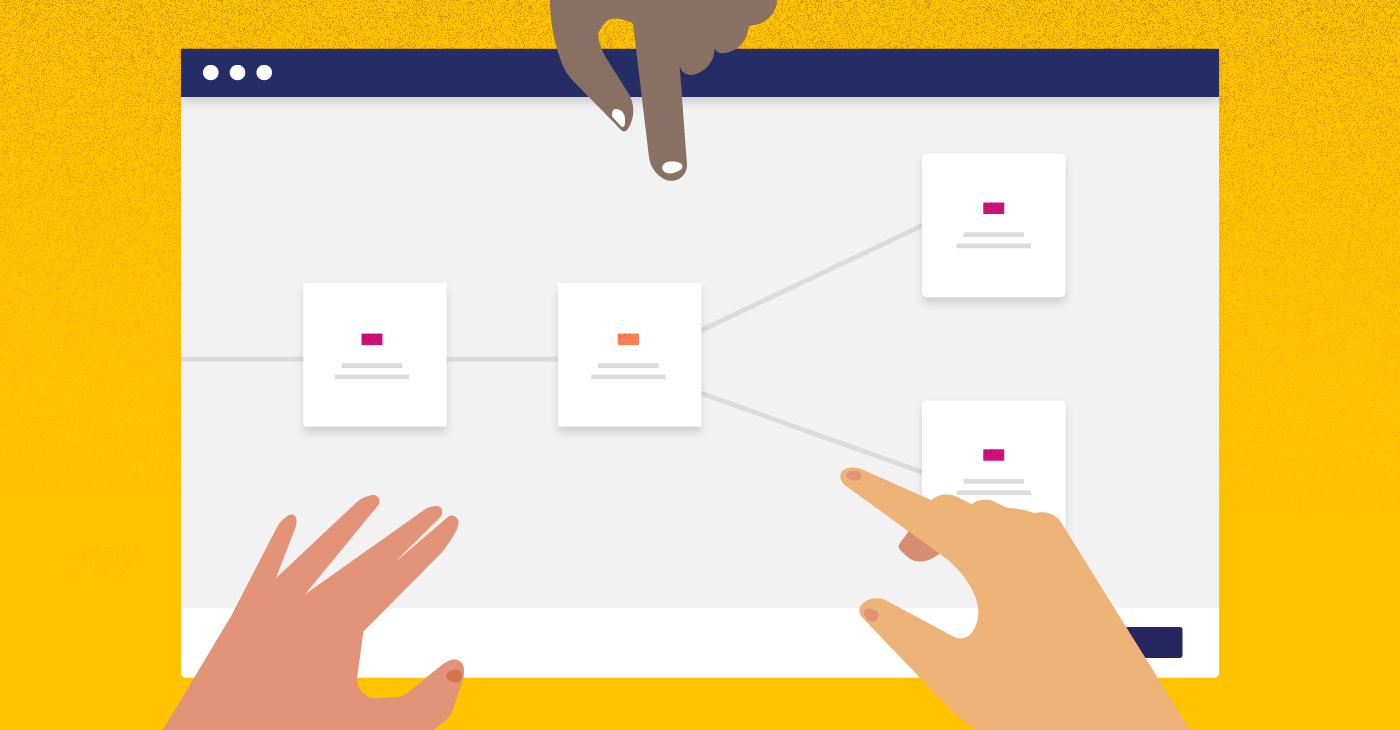Fear of Marketing Automation (#FOMA): Insufficient Customer Data
January 17, 2018 7 min read

Technology can seem intimidating, especially to professionals who lack a strong technical background.
However, in today’s competitive marketplace, failing to automate means potentially falling behind.
Chances are, your competition has already fully embraced software, and in doing so, they have access to information you don’t have.
If you haven’t adopted technology as part of your marketing efforts, however, you aren’t alone. According to Econsultancy’s State of B2B Marketing Automation study, 60 percent of companies still struggle to find the resources necessary to put marketing automation in place. That number is likely to decrease over time, so it’s important to begin researching automation for your marketing campaigns sooner, rather than later.
For the many businesses who have let Fear of Marketing Automation (FOMA) hold them back, a small amount of research could make all the difference. This guide will help you as you prepare to automate your business’s marketing efforts, whether you’re considering email marketing automation, social media marketing automation, or another option.
Addressing the Fear
Fear serves a very real purpose.
When presented with a danger, humans experience a rush of adrenaline necessary to take action. If that danger is a big bear or an approaching tornado, that sudden surge of energy can be useful.
However, when you have a fear of the unknown, it can hold you back.
There’s comfort in knowing you aren’t alone. In fact, 15.7 percent of the population fears unfamiliar technology, ranking higher than germs, blood, and strangers.
With technology driving so much of our lives today, though, it’s important to recognize that something is only “new” until you learn more about it. Tech providers are well aware of these fears and have worked hard to make it easier than ever to familiarize yourself with technology well before you commit.
Each day, therapists encounter patients who want to overcome their fears. The first step is often to get to the root of those fears. What in your past makes you afraid of the things you fear? Is there a previous experience that taught you that tackling something new can lead to problems? If you can identify the cause of your fear, it makes it much easier to take the next step.
The next step, as recommended by many therapists, is exposure. If you’re afraid of closed spaces, for instance, a counselor will likely gradually immerse you in tight situations until you begin to grow comfortable. If your fear is specific to public speaking, you may be referred to an organization that can help you gain confidence as you speak in front of audiences.
For the many people who fear new technology, exposure is easy. Many solutions providers offer a free demo or trial period, during which time you’ll be allowed to try out various features and make sure they’re right for you. You’ll likely be surprised to find that today’s cloud-based solutions are much more user-friendly than the applications you tried in the past.
The Fear of Missing Data
For professionals across all industries and specialties, their fears are specific to marketing automation. They may not feel that “fight or flight” type of fear as much as they procrastinate learning more about it because they don’t fully understand it. All around them, companies are using the latest technology to reach customers in ways not available through traditional marketing methods. Procrastination means being left far behind by the competition, who will lure customers away.
But as you look at various solutions, a new fear may emerge. What if you don’t have the data necessary to get started with your marketing research? What many professionals don’t realize is that marketing automation can help you build and enrich your existing databases. You’ll be collecting information on a daily basis that you never had access to before. That information includes:
- Customer names and contact information.
- Customer website activities, including website clicks and shopping cart abandonments.
- Email opens.
- Link clicks within emails.
- Subscribers who open emails but don’t click.
- Social media engagements.
By gathering this information, you can create marketing campaigns that target specific customers based on the data you’ve gathered. If you have a clearance sale, for instance, you can reach out to customers who have bought similar items in the past. You can even create a targeted campaign specific to customers who have never opened an email but remain on your subscriber list.
All of this data goes beyond the type of information you could collect from customers on your own, even if you conducted a survey. The right marketing automation can fill your database with information that you can then use to segment your lists. As customers begin to demand personalized marketing, the businesses that stick to traditional one-size-fits-all messaging will lose to companies who have the automation necessary to customize their approach.
Understanding the Tools

Chances are, you have specific goals for your business’s marketing efforts.
You likely know your customers already and have determined where your ideal customer is likely to hang out. For many businesses today, marketing is a combination of social media, blogging, and email messaging, as well as any traditional advertising they choose to use.
You don’t have to tackle every type of marketing automation at once. Many businesses choose to start with email marketing automation since studies show 92 percent of all online adults use email. Marketers also find the return on their investment is better with email, with marketers estimating an ROI of 122 percent on the email campaigns they launch. Best of all, many professionals are already familiar with setting up and sending emails, so the user interface of email marketing solutions is often easier to learn than other tools.
Once you’ve researched reviews and recommendations, finding a solution that works for you, ask for a demo if one isn’t available online. This demo will show you exactly how the platform works. From this presentation, you’ll be able to see the reporting features built into the solution, as well as features like segmentation that can help you put that information to work to market to potential customers.
Outlining Your Needs
Since email marketing automation can help you build and grow your database, it’s important to work well in advance to identify what you hope to get out of it. This starts with highlighting the business gains you hope to achieve.
Is your goal to grow your customer base, increase brand awareness, nurture existing customers, or a combination of all of the above? By knowing your end goal, you’ll be more likely to choose an email marketing automation solution that gets exactly the results you want.
Once you’ve outlined those overall goals, it’s important to identify exactly what information you hope to gather from your automation efforts. The first layer will be the data you need to customize your future marketing efforts, including customers who purchased certain products you offer and newsletter subscribers who clicked on various links. If you have an existing database, ensure that your email marketing solution can deliver the necessary information to fields within that solution to avoid duplicate work.
As you’re defining your requirements, take into account other benefits software can provide, including allowing you to schedule messages to deploy at certain hours. With the right automation, you’ll be able to monitor email opens by day of week and time of day. This data will then allow you to choose the perfect time for your messages to hit recipients’ inboxes, upping the chances that they’ll be opened. When combined with market segmentation, this is a great way to boost your email marketing game.
Lastly, it’s important to carefully think through how you plan to use the data you gather in your marketing campaign planning. Once your automation is in place, you’ll regularly collect information such as email open rates, which will give you valuable insight into whether your subject lines are connecting with your target audience. You can then use A/B testing to experiment with various subject lines to learn more about what works and doesn’t work. Over time, you’ll have an approach that is more refined, limiting the risk of wasted time on ineffective subject lines.
Putting the Information to Use

Once your marketing automation tools are in place, the work begins.
It’s important to regularly review the needs you outlined before choosing your software and ensure you’re reaching those goals. Over time, you should see opens, clicks, and sales increasing as a result of your marketing efforts. By closely monitoring your results each month, you’ll be well on your way to fully understanding the exact marketing strategy you need to find success.
Whether you choose to connect with customers through social media, content, or email marketing automation, the key is to have the right tools in place to boost your efforts. The biggest benefit you’ll get from any marketing campaigns is the information it brings back to you. Built-in reporting tools will show you exactly how your efforts are received by your intended audience, which will keep you from wasting time on campaigns that don’t work. In the end, you’ll find your ROI increases when you’re monitoring every message you send and each piece of content you post.



